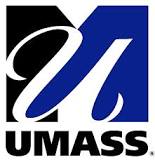Investigation of a Behavioral Substitute for Sunbathing
| Status: | Completed |
|---|---|
| Conditions: | Skin Cancer, Skin Cancer, Cancer |
| Therapuetic Areas: | Oncology |
| Healthy: | No |
| Age Range: | 18 - 120 |
| Updated: | 4/21/2016 |
| Start Date: | April 2006 |
| End Date: | December 2007 |
RATIONALE: Understanding why sunbathers use or don't use sunless tanning products may help
doctors plan effective ways to prevent skin cancer caused by sunbathing.
PURPOSE: This phase I/II trial is studying attitudes about the use of sunless tanning
products and how well sunless tanning products work as a substitute for sunbathing in
healthy participants.
doctors plan effective ways to prevent skin cancer caused by sunbathing.
PURPOSE: This phase I/II trial is studying attitudes about the use of sunless tanning
products and how well sunless tanning products work as a substitute for sunbathing in
healthy participants.
OBJECTIVES:
Primary
- Determine participants' attitudes regarding the benefits and barriers to using sunless
tanning products after having sampled them. (Phase I)
- Determine participants' opinions, suggestions, and preferences regarding use of sunless
tanning products. (Phase I)
- Determine the validity and reliability of the Sunless Tanning Attitudes Survey.
- Determine time spent sunbathing in random beach-goers. (Phase II)
Secondary
- Determine sunburn frequency in random beach-goers. (Phase II)
- Determine the use of a sunless tanner in these participants. (Phase II)
- Determine sun protection use in these participants. (Phase II)
- Determine perceptions of sun protection, susceptibility to photoaging, benefits of
sunbathing, and severity of photoaging. (Phase II)
OUTLINE: This is an open-label phase I study followed by a pilot, randomized, controlled
phase II study.
- Phase I (focus group): Participants complete the Sunless Tanning Attitudes (STA)
survey, Sun Behavior (SB) survey, and the Decisional Balance for Sun Exposure and Sun
Protection Questionnaire. Participants who have used a sunless tanner in the past also
complete the Sunless Tanner Users (STU) survey. Participants receive sunless tanning
lotion and instructions for its use. Participants are instructed to use the sunless
tanner for 2 weeks (≥ 3 applications). Participants then complete the STA, SB, and STU
surveys and participate in a focus group.
- Phase II:Participants are stratified by beach location and randomized to 1 of 2
intervention arms.
- Arm I: Participants complete surveys as in phase I. Photographs are taken of the
participants and they then receive sunscreen lotion and sunless tanning lotion and
instructions and benefits for using both. Participants also receive an educational
pamphlet regarding skin cancer.
- Arm II: Participants complete surveys as in phase I. A souvenir photograph is
taken of the participants and they then receive product samples that are
irrelevant to skin cancer risk reduction (e.g., skin moisturizer, hair gel,
chewing gum). Participants also receive educational materials at the completion of
the study.
In both arms, participants complete surveys again at 2 and 12 months.
PROJECTED ACCRUAL: A total of 330 participants will be accrued for this study.
Primary
- Determine participants' attitudes regarding the benefits and barriers to using sunless
tanning products after having sampled them. (Phase I)
- Determine participants' opinions, suggestions, and preferences regarding use of sunless
tanning products. (Phase I)
- Determine the validity and reliability of the Sunless Tanning Attitudes Survey.
- Determine time spent sunbathing in random beach-goers. (Phase II)
Secondary
- Determine sunburn frequency in random beach-goers. (Phase II)
- Determine the use of a sunless tanner in these participants. (Phase II)
- Determine sun protection use in these participants. (Phase II)
- Determine perceptions of sun protection, susceptibility to photoaging, benefits of
sunbathing, and severity of photoaging. (Phase II)
OUTLINE: This is an open-label phase I study followed by a pilot, randomized, controlled
phase II study.
- Phase I (focus group): Participants complete the Sunless Tanning Attitudes (STA)
survey, Sun Behavior (SB) survey, and the Decisional Balance for Sun Exposure and Sun
Protection Questionnaire. Participants who have used a sunless tanner in the past also
complete the Sunless Tanner Users (STU) survey. Participants receive sunless tanning
lotion and instructions for its use. Participants are instructed to use the sunless
tanner for 2 weeks (≥ 3 applications). Participants then complete the STA, SB, and STU
surveys and participate in a focus group.
- Phase II:Participants are stratified by beach location and randomized to 1 of 2
intervention arms.
- Arm I: Participants complete surveys as in phase I. Photographs are taken of the
participants and they then receive sunscreen lotion and sunless tanning lotion and
instructions and benefits for using both. Participants also receive an educational
pamphlet regarding skin cancer.
- Arm II: Participants complete surveys as in phase I. A souvenir photograph is
taken of the participants and they then receive product samples that are
irrelevant to skin cancer risk reduction (e.g., skin moisturizer, hair gel,
chewing gum). Participants also receive educational materials at the completion of
the study.
In both arms, participants complete surveys again at 2 and 12 months.
PROJECTED ACCRUAL: A total of 330 participants will be accrued for this study.
DISEASE CHARACTERISTICS:
- Self-described sun bather (phase I)
- Intentional sun exposure lasting ≥ 1 hour to get a tan (outside or via tanning
salon) at least twice a month during the months of June to August of the prior
year
- Intends to continue tanning during the coming summer months
- Random beach-goer (phase II)
PATIENT CHARACTERISTICS:
- Female
- Must speak English
- Must be able to read at the 6th grade level
- No prior sunless tanning products (phase I)
We found this trial at
1
site
Univ of Massachusetts Med School As the commonwealth's only public medical school, we take seriously...
Click here to add this to my saved trials
